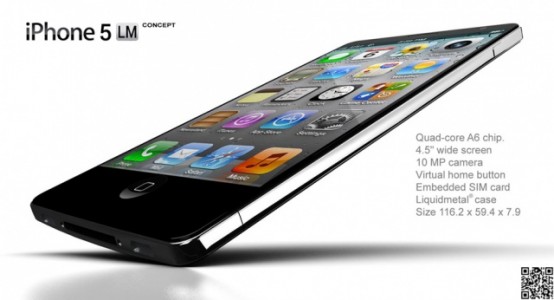In anul 2010 Apple a cumparat brevetele de inventie pentru tehnologia “metalului lichid” si, conform creatorului, ei compania ar putea lansa un produs revolutionar baza pe aceasta tehnologie, insa nimeni nu stie cand. Deocamdata Apple perfectioneaza tehnologia cumparata acum cativa ani si creatorul ei estimeaza ca intre 300 si 500 de milioane de dolari vor fi cheltuiti in procesul de dezvoltare a tehnologiei, proces care ar putea dura intre 3 – 5 ani. Deocamdata Apple a folosit aceasta tehnologie pentru “cheita” care va ajuta sa scoateti cartelele SIM din iDevice-uri si iPhone 3G a fost primul dispozitiv in care ea a fost implementata.
For example, I estimate that Apple will likely spend on the order of $300 million to $500 million — and three to five years — to mature the technology before it can used in large scale. The first application was SIM card ejector pin, which I figured out after buying my iPhone 3G. I am not aware of any other application Apple has used Liquidmetal so far. Given the size of MacBook and scale of Apple products, I think it’s unlikely that Liquidmetal casing will be used in MacBooks in the near term. It’s more likely in the form of small component such as a hinge or bracket. A MacBook casing, such as a unibody, will take two to four more years to implement.
In ceea ce priveste posibila lansare a unui produs Apple facut din metal lichid, ei bine inventatorul tehnologiei sustine ca vor mai trece intre 2 si 4 ani pana cand Apple ar putea produce un MacBook Pro doar din metal lichid, insa intre timp am putea vedea diverse componente ale sale produse din acest material. Chiar daca tehnologia nu va ajunge in Mac-uri, Apple ar putea construi un iPhone cu ajutorul ei si se pare ca un produs cu fabricat folosind acest material ar fi greu de reprodus de catre concurenta folosind alte materiale, deci cei de la Samsung ar fi nevoiti sa gandeasca alte metode de a ramane relevanti.
I expect Liquidmetal application in two ways: First evolutionary substitution of current materials and secondly, and more importantly, in a breakthrough product made only possible by Liquidmetal technology. Apple’s exclusively licensing a new material technology (specifically for casing and enclosures) is a first in the industry. This is very exciting. Therefore, I expect Apple to use this technology in a breakthrough product. Such product will likely bring an innovative user interface and industrial design together, and will also be very difficult to copy or duplicate with other material technologies.
In concluzie, Apple va folosi tehnologia “metalului lichid” la produse interesante in viitor, dar deocamdata aceasta tehnologie este departe de a putea fi utilizata pentru produse ce sunt distribuite la scara larga.






















